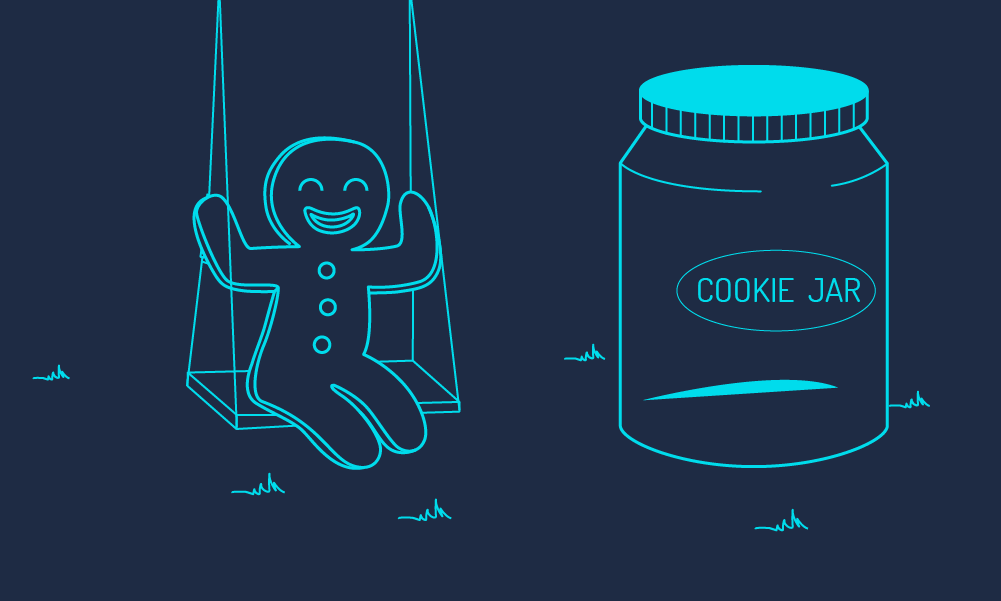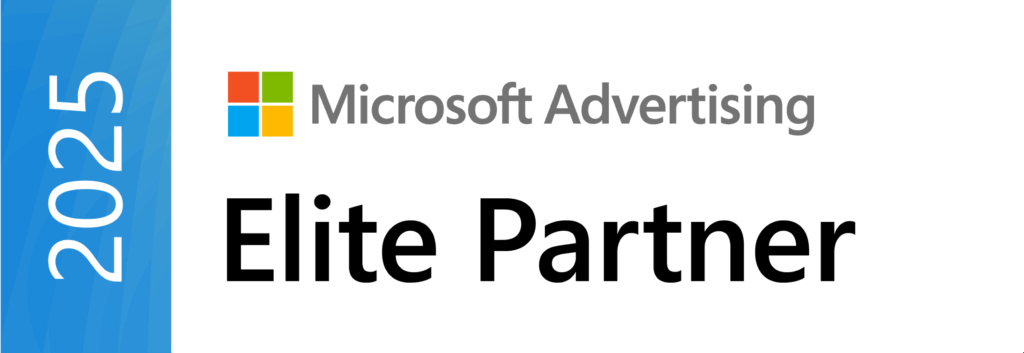Landing pages for B2B - part 2
This is the second in a series of blogs looking in detail at landing pages for B2B.
On this page:

Last time I explained why landing pages are so important for B2B lead gen activity.
This time we’ll look at how to create a good B2B lead gen landing page – the layout, copy and information architecture decisions that go into the landing page design process.
More “guidelines” than actual rules
Confession time. I’m a terrible graphic designer. My brain just isn’t wired right for that type of work. (Fortunately, I have a great team of excellent designers at Sharp Ahead to cover for me!) So I’m certainly not going to try to tell you exactly what your landing page should look like.
But even if I were the world’s greatest graphic designer, I still couldn’t tell you what YOUR landing page should look like. There’s no single formula for a B2B lead generation landing page. Design and content choices depend on your target audience, your branding, your competitive positioning and many other factors.
My strength is a good sense of user experience and an understanding of the B2B conversion journey. And from that I can share some general principles about B2B landing page design. In other words, I can give you some guidelines about what your landing page needs to DO.
We use these guidelines all the time when we’re designing and reviewing lead generation landing pages. Keep these in mind in your own landing page projects and your pages will have a better chance of success.
Guideline 1: stay oriented on the user journey
Your lead gen landing page is not a standalone user experience. It’s a mid-stream stepping stone in an intended user journey. Keep this in mind when you are making design decisions.

What will bring the person to the page? Most likely it will be one of your paid search ads, or some other form of paid media. You’ll have a precise idea of the likely search term and the copy (and images, if any) that the person will have seen in the ad.
If you want to keep the forward momentum in the visitor’s journey, the landing page must continue the “scent trail” that you established with the ad. For example:
- Wording of ad and landing page copy should be consistent and in particular the landing page headline should closely match the ad’s headline. (We call this “message match”, and it’s good for both increasing conversions and for boosting your Google Ads quality score.)
- Any graphics from the ad should be visually consistent with the landing page’s graphics.
- Both the ad and the landing page should be clearly associated with your company name (or product brand name).
If you don’t do those things you’ll create doubt in the visitor’s mind. If the landing page seems to be about a different subject from the ad, the visitor might assume there’s been a mistake. If the landing page isn’t clearly associated with the correct company, the visitor might assume the page is a scam of some sort, or at least a third-party intermediary trying to inject themselves into the sales process. Nothing good will come from those sorts of doubt! “Doubt is the conversion-killer.”
What’s the call to action? You want the target visitor to DO something as a result of visiting the page. Most likely, that’s to get in contact with you so they can engage in a sales conversation. The overarching purpose of your page is to persuade and enable the visitor to achieve that action.
The content that you choose to put on your landing page needs to serve some purpose in advancing the visitor towards the desired action. If it doesn’t do that, it doesn’t belong on your landing page.
The threat of the back button! Never forget that your expensively-acquired visitor is a single click away from gone forever. Your page needs to compete with all of those other blue links or shiny social feed items on the visitor’s previous page. You need to be concise and to the point. Junk the fluff. Which bring us to…
Guideline 2: This End Towards Prospect – the crucial above-the-fold section

Like a rocket ship, the top part of a landing page is the most important! The section that displays above the page fold on a desktop browser is your “payload”. If you don’t engage the visitor here, they’ll hit the back button. If that happens, it doesn’t matter how much wonderful, persuasive content you had below the fold. That person will never see it.
So the above-the-fold section is where you must bring your best game.
Things I’m looking for above the fold in a good landing page design:
- A clear, highly-visible headline that is message-matched to the ad that brought the visitor to the landing page.
- Ultra concise, legible copy that confirms that your product or service is a relevant solution for the target visitor’s problem.
- Some form of social proof, or something else that instantly establishes credibility.
- A graphical layout that makes it clear there is more information further down the page, with a reason to keep scrolling.
- A clear, simple-to-follow call-to-action.
- A sufficient presence of your company name and branding that makes it clear this is a legitimate page and you’re happy to put your name to it.
That’s it. Everything else can go lower on the page.
In particular some things I DON’T want to see above the fold:
- Monster foreground graphics that eat up so much space there’s no room for other content.
- Noisy visuals and animation, that draw the eye away from the other features. Keep your graphics simple and low key, and don’t use animation or video unless that is absolutely the best way to communicate the essential features I’ve listed above.
- Huge blocks of text that can’t be skimmed by a busy, easily-distracted visitor. Your text must be concise and easy to skim.
- A form with an intimidating number of compulsory fields. Hide the form in a pop-up, or put it lower on the page.
- Popups and other visual clutter (except for the essential cookie consent notice).
Be particularly wary of using photos and videos of real faces in this part of the page. Our brains are hard wired to look at faces so they draw the viewer’s attention like a magnet – which means other, more persuasive parts of the page will be ignored. Don’t show faces unless the face is somehow central to your story.
Some technical aspects to remember when designing the above-the-fold section:
- The page fold falls in different places depending on the size of a user’s browsing window. If you do your design work on a huge screen, be mindful that your average user’s page fold will be a lot higher than yours – so things on the lower part of your screen won’t be visible to them.
- When your page is live for a real user they will see your consent banner and potentially other pop-ups that are added by your martech stack. For example, they might see a live chat window. These might hide some of the key elements of your page. Test your landing page in the live environment before you finalise the design. You might need to move things around so that your cookie bar doesn’t conceal some crucial element!

Lastly, don’t be too clever in this part of the landing page. You need to grab the visitor’s attention quickly and you can’t assume they are motivated to put a lot of cognitive effort into understanding your page. This isn’t the place for tricky puns or subtle attempts at thought leadership. Keep it simple and direct.
Getting this above-the-fold section right is HARD. You have limited screen real estate and so many things that you want to say to your visitor! But you must make those prioritisation choices if you want to maximize the performance of your landing page. If you’re doing this part of the design process right, those trade-off choices should feel agonising and brutal.
The top section on mobile
The same principles about the above-the-fold “payload” apply on a mobile device. And that makes the layout trade-offs even more painful because, obvs, a mobile’s screen is a lot smaller than a computer’s. But you have a little more leeway about the “fold”. It’s more natural to scroll down on a phone than on a computer. (And it’s HARDER for a person on a phone to hit the “back button”.) So a person browsing your landing page on a phone screen might scroll through, say, two or three screenfuls before they reach a decision about your page.
So instead of “these things MUST be above the page fold”, on mobile we can change that to “these things should IDEALLY be above the page fold, but if not, they MUST be present in the first two or three screens”.
In any case, remember that your landing page is going to look very different to a visitor on a mobile device than to someone on a computer. But that mobile user is just as likely to become a good lead. (For most of our client campaigns we find around 50% of our leads come from mobile visitors.) So pay attention to the mobile experience.
User testing for a landing page
Once you’ve made all those agonizing decisions about what to put above the fold and what to push down the page, wouldn’t it be good to have some way to test whether you have them right?
A word to the wise: the above-the-fold section of a landing page design makes a great subject for a 5 second user test. Enough said.
Guideline 3: obsess about the call to action

All of your good work so far will come to nothing unless you have a good call to action and your landing page design works well in support of that CTA.
You should obsess about this aspect of your landing page and do everything you can to optimise it. A 10% improvement in the effectiveness of your CTA means 10% more leads. Simple as.
There is such a lot to say about the landing page call to action that I’m going to give it its own blog article. So stay tuned for that next time!
On this page:
Subscribe
Everything B2B Marketers Should Know about LinkedIn Content Creators
How you can transform your C-suite and employees into LinkedIn Content Creators—and why it’s a good idea.
GEO Best Practice: Authority and Answers
Learn how to build authority and craft AI-ready answers with GEO (Generative Engine Optimization) — a must-know for B2B marketers.
Preparing for AIOs and Agentic Search: Top Tips for B2B Marketers
AI is changing the world fast and SEO is no exception. Here’s how to start preparing for AIOs and agentic search now.













